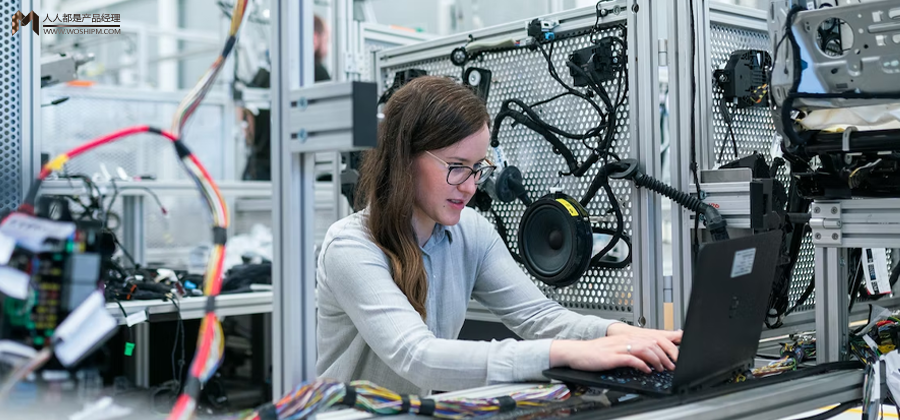Mind and Machine: Product Design in the AI Era is a Profound Psychological Practice
-
From prompt words to feedback mechanisms, from semantic understanding to emotional regulation, product design in the AI era is essentially a psychological practice. Designers need to redefine the boundaries of 'human-computer interaction' and construct new cognitive anchors and behavioral pathways.

As artificial intelligence transitions from science fiction to reality, becoming assistants in our phones, collaborators at work, and companions in daily life, a core question arises: Are we interacting with machines, or with simulated 'minds'?
The answer may be both. The most successful AI products are not merely showcases of algorithmic prowess but the result of a profound understanding and respect for the human mind. The integration of AI and psychology is reshaping the paradigm of product design, elevating human-computer interaction into an unprecedented 'mind-machine interaction.'
1. The Beginning of Understanding: AI Needs to Be 'Humanized,' Not to Make Humans 'Mechanized'
Traditional software follows cold logic: input commands, receive outputs. But humans inherently crave interaction with 'subjects,' not 'objects.' This makes the primary task of AI product design building trust and affinity.
-
Social Response Theory: Even when we know the other party is a machine, we instinctively exhibit social behaviors toward it. This means the persona of an AI product is crucial. Its tone, response style, and even 'personality' must be carefully designed. For example, a medical diagnosis AI should adopt a calm, professional tone to build trust, while a companion AI may need warmer, more empathetic expressions.
-
Expectation Management: The Expectation Confirmation Theory in psychology states that user experience depends on the comparison between product performance and prior expectations. Thus, clearly defining the AI's capabilities ('What I can and cannot do for you') is critical. Overpromising leads to disappointment, while underpromising and overdelivering can create delight and long-term goodwill.
2. The Dance of Collaboration: How to Enable Humans and AI to Work Together Efficiently?
As a collaborator, AI must align with human work habits and thought processes, not force humans to adapt to machine logic.
-
Attribution Theory: Humans need to understand 'why.' When an AI makes a decision or recommendation, Explainable AI (XAI) is not just a technical issue but a psychological need. Users need to know a song was recommended because 'you’ve been listening to indie rock lately,' not due to an incomprehensible 'black box' decision. Transparent explanations build trust and reduce anxiety.
-
Cognitive Load Theory: A key goal of AI is to reduce human cognitive burden. Great products provide the right support at the right time in the most natural way. For example, a writing assistant offers suggestions only when the user is stuck, not by constantly interrupting; a calendar AI identifies meeting times in emails and asks if they should be added, rather than requiring manual input. It should act as a 'copilot,' smoothly handling tedious tasks so users can focus on higher-level decisions and creativity.
3. Motivation and Change: AI as a 'Personalized Behavior Coach'
This is one of the most promising areas where AI and psychology intersect. AI can become a powerful catalyst for achieving personal goals, leveraging behavioral economics and motivation theories.
1) Personalized Nudges: Based on Prospect Theory, people are more sensitive to losses. A fitness AI might say, 'If you don’t exercise today, you’ll break your 7-day streak,' which is more effective than 'Exercise now!' AI can analyze vast personal data to intervene at the optimal time and in the most effective way, helping users build habits like saving, studying, or exercising.
2) Self-Determination Theory: Intrinsic motivation stems from autonomy, competence, and relatedness.
Successful AI products:
- Empower choice: Make users feel they control the AI, not vice versa.
- Provide positive feedback: Celebrate small wins (e.g., 'Congrats! You’ve studied for 5 days straight!') to boost competence.
- Foster connection: For example, a language-learning AI can connect users to a real community to fulfill social belonging.
4. The Ethical Mirror: Beware of Psychological Manipulation and Dependence
Great power comes with great responsibility. AI’s ability to understand human vulnerabilities can also be exploited for manipulation.
-
Addictive Design: Using variable reward schedules (like slot machines' unpredictable feedback) to keep users endlessly refreshing social media. AI can optimize this to maximize engagement, potentially harming mental health.
-
Emotional Deception: If users develop deep emotional dependence on AI, how do we define the authenticity of this relationship? We must avoid creating 'emotional illusions' that exploit loneliness.
-
Bias Reinforcement: If training data contains societal biases, AI will learn and amplify them, negatively impacting specific groups.
Conclusion: The Guiding Star of Design Remains 'Humanity'
The fusion of AI and psychology marks a profound shift in product design from 'functional logic' to 'mind logic.' Technology will evolve and become obsolete, but fundamental human needs—to be understood, respected, empowered, and cared for—are timeless.
The top AI product managers of the future may be both engineers and 'applied psychologists.' Ultimately, the measure of an AI product’s success won’t be how 'smart' it is, but how much 'wisdom' and 'care' it makes its users feel.
-
